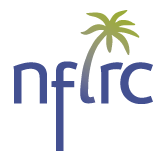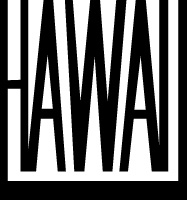
Edited by Mandana Seyfeddinipur
University of Hawai‘i Press
ISBN-13: 978-0-9856211-6-2
Over the past 20 years, language documentation activities have been increasing all over the world. Major funding initiatives in Germany (Dokumentation Bedrohter Sprachen (DoBeS) funded by Volkswagen Stiftung), the UK (Endangered Languages Documentation Programme (ELDP) funded by Arcadia) and the US (Documentation of Endangered Languages (DEL) funded by the National Science Foundation) have enabled more and more scholars and students to conduct fieldwork and to document languages for which little or no documentation exists.
Language documentation scholars have also initiated a critical evaluation of central concepts in the endangered languages documentation discourse, including assessments of concepts such as language endangerment and language shift, the documentary practices of scholars in the field and digital archiving practices. In particular, linguists working in Sub-Saharan Africa are now challenging the discussions traditionally dominated by North American and Australian discourses. New studies reinvigorating classic Boasian concepts and methodologies challenge the applicability of these concepts to the African context (see e.g. Essegbey et al. 2015, Lüpke & Storch 2013, Mc Laughlin 2009, Vigouroux & Mufwene 2008), as many of the issues and proposed solutions of the language documentation discourse to date do not apply to many areas of the continent (nor, indeed, to the many multilingual linguistic ecologies that can be found worldwide).
Scholars are proposing a rethinking of models, theories and methods in the discourse of language documentation and language endangerment. The main line of thought presented in this volume is a broadening of the scope of linguistic investigation and documentation with an ethnographic view. A deeper contextual embedding of linguistic data in a detailed description of language use and its sociocultural context allows for a better understanding and interpretation of current language ecologies and of the documentary and descriptive data gathered within them. A broader understanding of a larger set of language use patterns, linguistic contexts and ecologies can in turn feed into our understanding of how languages evolve, shift and change, and how multilingual patterns arise and may either persevere or decline.
-
- Language documentation in Africa: turning tables (Seyfeddinipur, Mandana; Chambers, Mary)
-
- Why are they named after death? Name giving, name changing and death prevention names in Gújjolaay Eegimaa (Banjal) (Sagna, Serge; Bassène, Emmanuel)
Abstract: This paper advocates the integration of ethnographic information such as anthroponymy in language documentation, by discussing the results of the documentation of personal names among speakers of Gújjolaay Eegimaa. Our study shows that Eegimaa proper names include names that may be termed ‘meaningless names’, because their meanings are virtually impossible to identify, and meaningful names, i.e. names whose meanings are semantically transparent. Two main types of meaningful proper names are identified: those that describe aspects of an individual’s physic or character, and ritual names which are termed death prevention names. Death prevention names include names given to women who undergo the Gaññalen ‘birth ritual’ to help them with pregnancy and birthgiving, and those given to children to fight infant mortality. We provide an analysis of the morphological structures and the meanings of proper names and investigate name changing practices among Eegimaa speakers. Our study shows that, in addition to revealing aspects of individuals’ lives, proper names also reveal important aspects of speakers’ social organisation. As a result, anthroponymy is an area of possible collaborative research with other disciplines including anthropology and philosophy.
- Why are they named after death? Name giving, name changing and death prevention names in Gújjolaay Eegimaa (Banjal) (Sagna, Serge; Bassène, Emmanuel)
-
- Linguistic variation and the dynamics of language documentation: Editing in ‘pure’ Kagulu (Marten, Lutz; Petzell, Malin)
Abstract: The Tanzanian ethnic community language Kagulu is in extended language contact with the national language Swahili and other neighbouring community languages. The effects of contact are seen in vocabulary and structure, leading to a high degree of linguistic variation and to the development of distinct varieties of ‘pure’ and ‘mixed’ Kagulu. A comprehensive documentation of the language needs to take this variation into account and to provide a description of the different varieties and their interaction. The paper illustrates this point by charting the development of a specific text within a language documentation project. A comparison of three versions of the text – a recorded oral story, a transcribed version of it and a further, edited version in which features of pure Kagulu are edited in – shows the dynamics of how the different versions of the text interact and provides a detailed picture of linguistic variation and of speakers’ use and exploitation of it. We show that all versions of the text are valid, ‘authentic’ representations of their own linguistic reality, and how all three of them, and the processes of their genesis, are an integral part of a comprehensive documentation of Kagulu and its linguistic ecology.
- Linguistic variation and the dynamics of language documentation: Editing in ‘pure’ Kagulu (Marten, Lutz; Petzell, Malin)
-
- Pure fiction – the interplay of indexical and essentialist language ideologies and heterogeneous practices. A view from Agnack (Lüpke, Friederike)
Abstract: This paper investigates the complex interplay between different sets of language ideologies and multilingual practice in a village in Lower Casamance (Senegal). In this heterogeneous linguistic environment, which is typical of many African settings, individuals have large and adaptive linguistic repertoires. The local language ideologies focus on different aspects of identity which languages serve to index, but enable individuals to focus on different facets of identity according to context. National language ideologies are essentialist and have as their goal to put constructed homogeneous communities on the polyglossic map of Senegalese languages. In contrast to similarly essential Western ideologies, however, these national ideologies operating in Senegal are not linked to actual standard language practices. Using the example of individuals in two households and by presenting rich ethnographic information on them, the paper explores the relationship between language use and language ideologies before describing a sampling method for documenting language use in these contexts. It is argued that the documentation of these contexts cannot be achieved independently of an understanding of the language ideologies at work, as they influence what is presented as linguistic practice, and that arriving at a holistic description and documentation of the multilingual settings of Africa and beyond is central for advancing linguistic theory in sociolinguistics, psycholinguistics and contact linguistics.
- Pure fiction – the interplay of indexical and essentialist language ideologies and heterogeneous practices. A view from Agnack (Lüpke, Friederike)
- Multilingualism, affiliation and spiritual insecurity. From phenomena to process in language documentation (Di Carlo, Pierpaolo)
Abstract: Documentary linguists have often been urged to integrate language ideologies and other topics more closely to ethnography than to linguistics in their research, but these recommendations have seldom coincided, in literature, with practical directions for their implementation. This paper aims to contribute to filling this gap. After re-considering current documentary approaches, a case study from a documentation project in NW Cameroon is presented to show how an ethnographically-informed sociolinguistic survey on multilingualism can lead to progressively deeper insights into the local language ideology. The methodological implications that this research perspective brings to both documentary linguistics and language support and revitalization projects are discussed. A number of practical suggestions are finally proposed, illustrating the importance of language documentation projects being carried out by multidisciplinary teams.




